After about six months of not cycling, it was finally time to go again. My plane landed in Jordan late at night, and I settled down to sleep in the airport until morning.
Once the sun came up, I put on all my warm clothes (it was 2°C outside) and set off cycling. I made it a bit over a kilometre before being stopped by soldiers. After looking at my passport and making a couple of phone calls, I was allowed to go. I set off cycling across a grassy plateau.

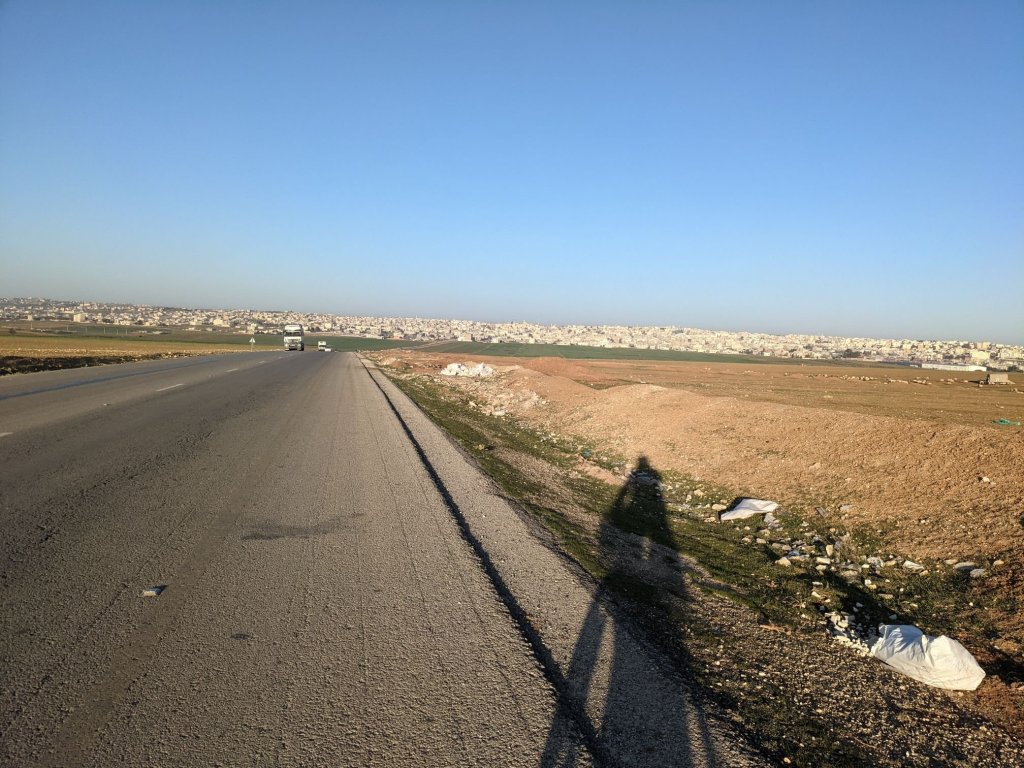
I reached the town of Madaba. A problem with my seatpost had developed into a widening crack that meant the saddle could easily come out from the post. I needed a replacement and got directed to a bike shop. The guy there didn’t speak English but pointing at the seatpost made the issue pretty clear.

We were able to find a seatpost of the right diameter on one of the bikes and swapped it over. It was also compatible with my saddle, which was a nice bonus. I was soon cycling off through the town.


Once I was back to the countryside, the road began to descend, down from Jordan’s central mountains towards the Dead Sea. I stopped a few times on the way down to adjust various things on the bike.
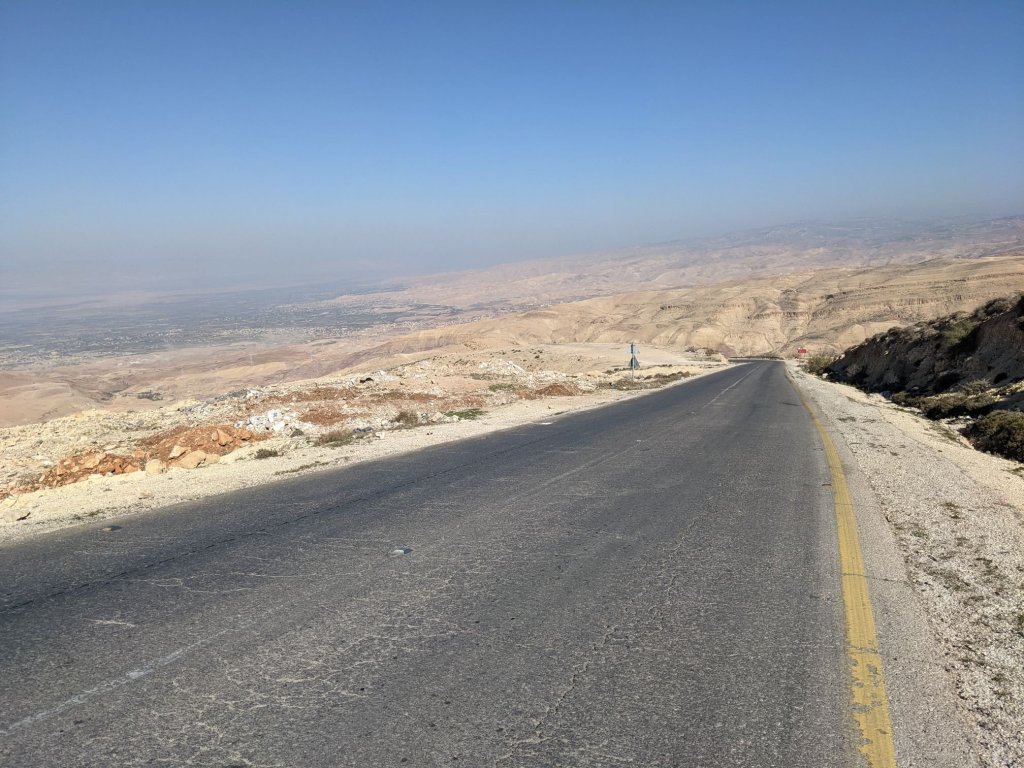
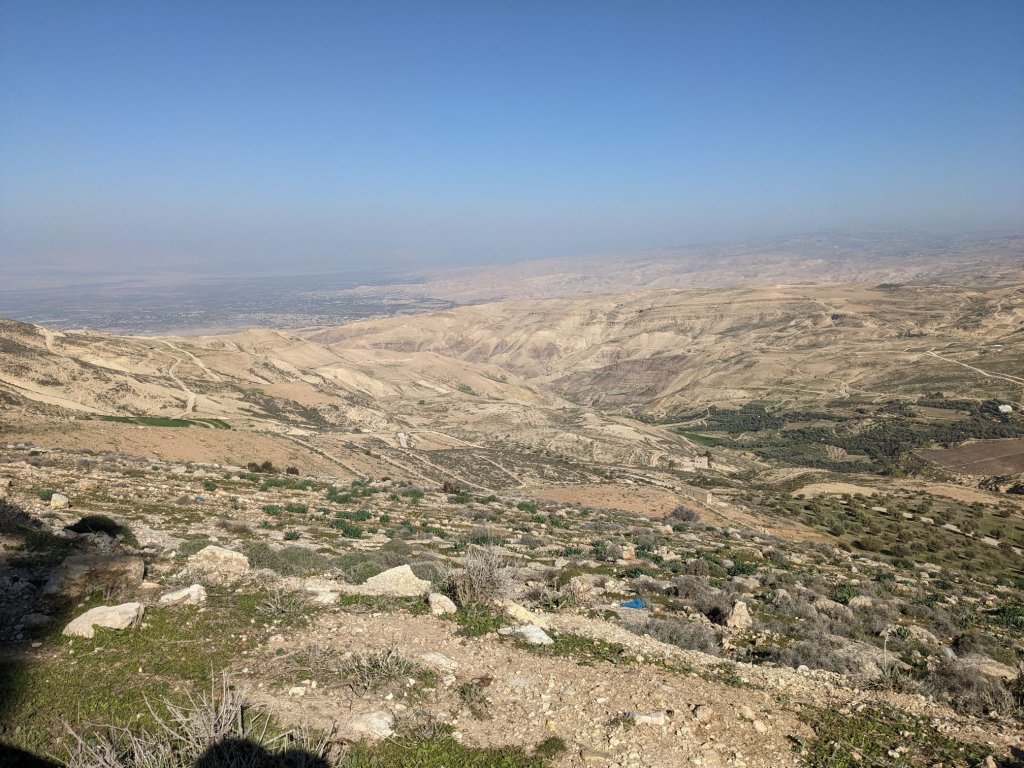
Once the landscape levelled out I took a shortcut along a farmers track alongside a canal. The pipes taking water away from the canal had ruptured in many places, flooding the road. Soon my bike was back to it’s usual status of being covered in mud.
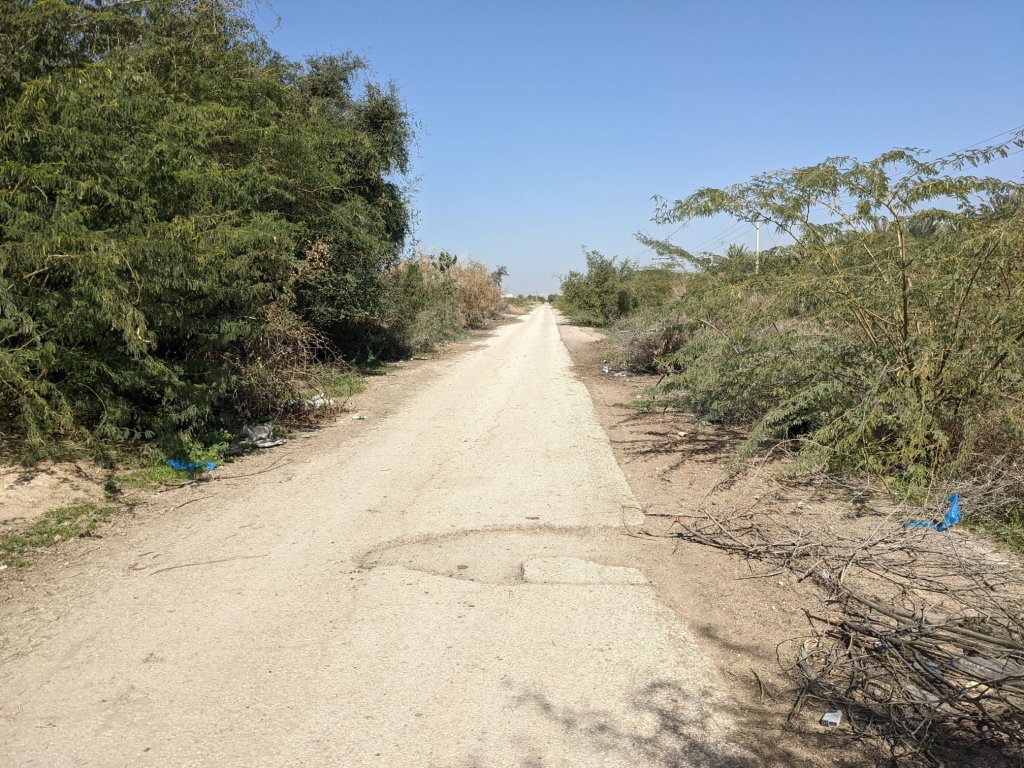
I rejoined the highway and pretty soon I approached the first border of my journey, crossing over to the West Bank. The West Bank is a disputed territory claimed by Jordan, Israel and Palestine but under de facto Israeli control.
Because of this, according to Jordan I’m technically not leaving the country, so they don’t provide an exit stamp. This has two benefits – I can return to the country on the same visa, and there’s no evidence of my going to Israel that could be used to block me entering other countries.
I wasn’t permitted to cycle across the border, so after going through Jordanian customs, I had to wait for the shuttle bus – a wait that turned out to take about an hour and a half. Then we headed over to the Israeli side where we had a remarkably long time. I drifted off to sleep a few times.
The Israeli border post resembled an airport and indeed signs stated it was under the jurisdiction of the Airport authority. Like at an airport, we had to go to a checking agent, and luggage was taken away by a conveyer belt (they had to open a bigger one for my bike).
Then we went inside and had to put belongings onto a tray to be x-rayed while we went through a metal detector. Then was passport control, and finally time to collect luggage. My bike showed no sign of appearing. I kept asking people and eventually – about half an hour after everyone else on my bus had got their luggage – they said the bike was too big to go through the security check.
Initially they said I’d have to go back to Jordan but then it was resolved by my removing the wheels. The bike was scanned, cleared and I was told I could go. I set off, and was then immediately told to stop because I couldn’t cycle here. I was taken back inside and my bike had to go through the security check again. Some officers who’d been there when it was first checked seemed to be pointing out the pointlessness of this, but others insisted.
Once my bike was re-checked, I was told I had to take a shared taxi away from the border area. They dropped me off about two kilometres further on, and I set off cycling.

The border crossing had taken well over four hours and it would soon be getting dark. I followed a track up into the hills and found a small dip where I was somewhat out of sight, and set up camp. And that was my first day back on the bike over!
I set off shortly after dawn the next morning riding north, parallel to the Jordan river. To my right, nearer the river, were farms and palm plantations. On the right were barren, rocky hills.


After a few hours of cycling, I reached a checkpoint. This marked the border between the West Bank and Israel proper. It was a much quicker affair – my passport was checked, the official asked what was in my framebag, and asked if anyone had given me anything to take across the border. Then I was free to go.
The most immediately obvious change was colour: everything was a lot more green. Doubtless the farms were better irrigated, but even the hills to the west were now grassy rather than rocky. I made my way to a town, which looked quite European. One of the most noteworthy things was that every house had a wheely bin outside it. Rubbish collection is not really a thing in the rest of the region.

After stopping at a supermarket (where prices were similarly European, though not as expensive as I expected) I continued on my way north. The road got busier as I went but there was usually a decent hard shoulder on which I could ride.
Late in the afternoon I reached the Sea of Galilee. I cycled along it’s western shore for a while.

The area to the left of the road was fenced, while the lake lay on the right. This didn’t leave room for anywhere suitable for wild camping, so I took a turnoff and began climbing a winding road up into the hills. There was an unfenced bit of public land which I made my way into and set up camp.
In the morning I continued my way up the hill, the first of several climbs. As I rode through a town in the morning, the road was reasonably busy, including a high truck. I wasn’t far behind it when it snagged an electrical cable, ripping several utility poles out of the ground. No one was hurt, though one pole did go within a couple metres of a man’s ahead. I was pretty impressed at the strength of the cables!
The day was pretty uneventful. I rode along a dual carriageway for much of it; dual carriageway in Israel generally have a decent shoulder. There seems to be a dearth of smaller roads though.
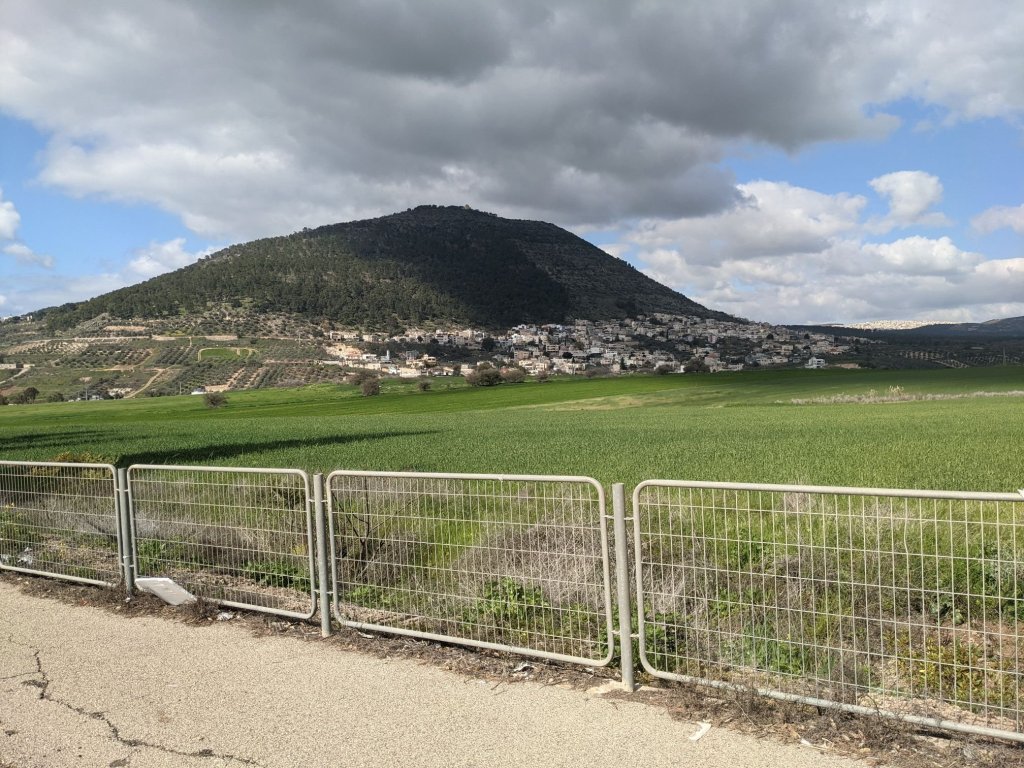
On the one occasion I did manage to find a smaller road, leading through a village, it had big gates on the entrance/exit. They were open on the way in but I had to wait a little before making my way out.
In the evening, as I cycled along I saw some woodland a few hundred metres away on the other side of the road. My map showed footpaths leading in there, so I made my way over and set up camp.

My destination the next day was Jerusalem, following a road that dipped in and out of the West Bank.

Entering Palestine, the only controls were on the other side of the road. On the way back into Israel, there were signs warning that Palestinian vehicles could go no further, and toll-booth style buildings with armed guards checking numberplates. I wasn’t stopped and just continued my way through.

For much of the day the road climbed – Jerusalem lies in the hills. I reached the edge of the city in the afternoon, and made my way to a bikeshop. The bike mechanic, Lieb, was just leaving as I arrived but kindly stayed to work on my bike. I got a few things done then set off to ride to a hostel. I was surprised to be able to ride on a bike path for much of the way.

I reached the hostel and checked in. It was within sight of the Old City, which I set off early to visit the next morning. I entered via the Damascus Gate.

I walked through some market streets, which were pretty quiet at that time. There were a few vendors setting up and occasionally a cat.

The first big site I went to see was the Church of the Holy Sepulchre. Supposedly it is built on the area of the crucifixion. It is a large building, effectively split into several smaller churches.



The city is split into four quarters – Christian, Jewish, Muslim and Armenian. On the way over to the Jewish Quarter I walked on the roofs above the market, which gave a nice view of the city.

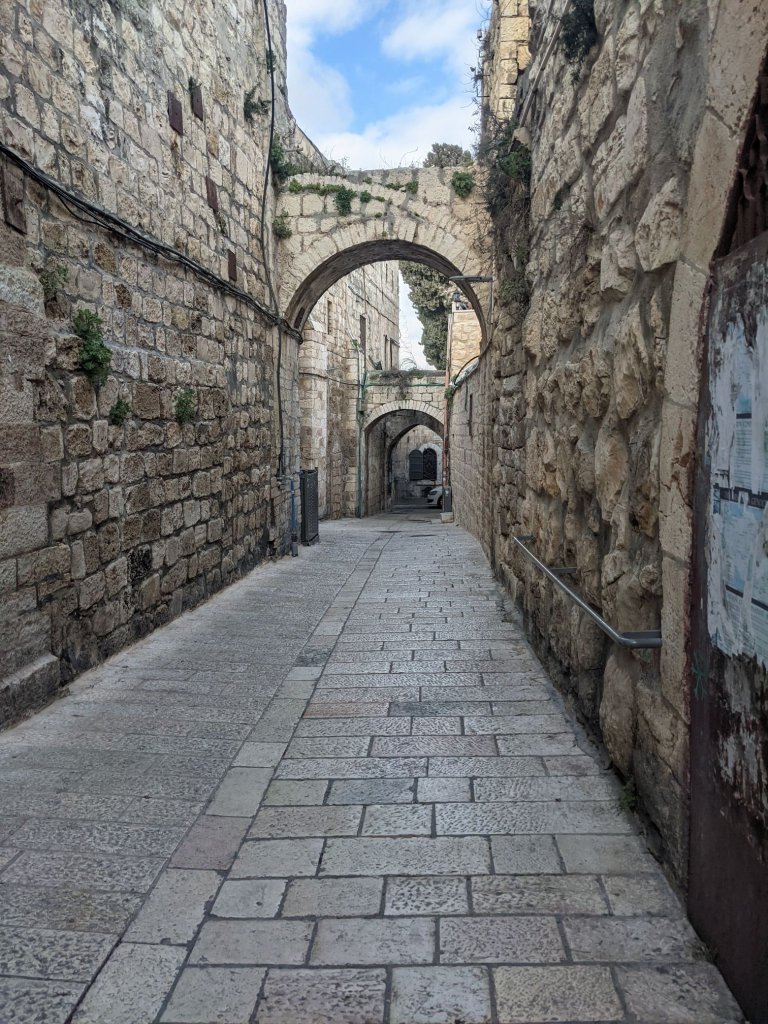
I detoured through the Armenian Quarter, the smallest. Most of it is private, although there were a few churches and other public buildings. Their high walls and narrow streets precluded good photos.
I then headed over to the main area; beginning with the Western Wall. Men and Women are directed to different sides of the wall, and I was required to wear a Kippah to go up close.
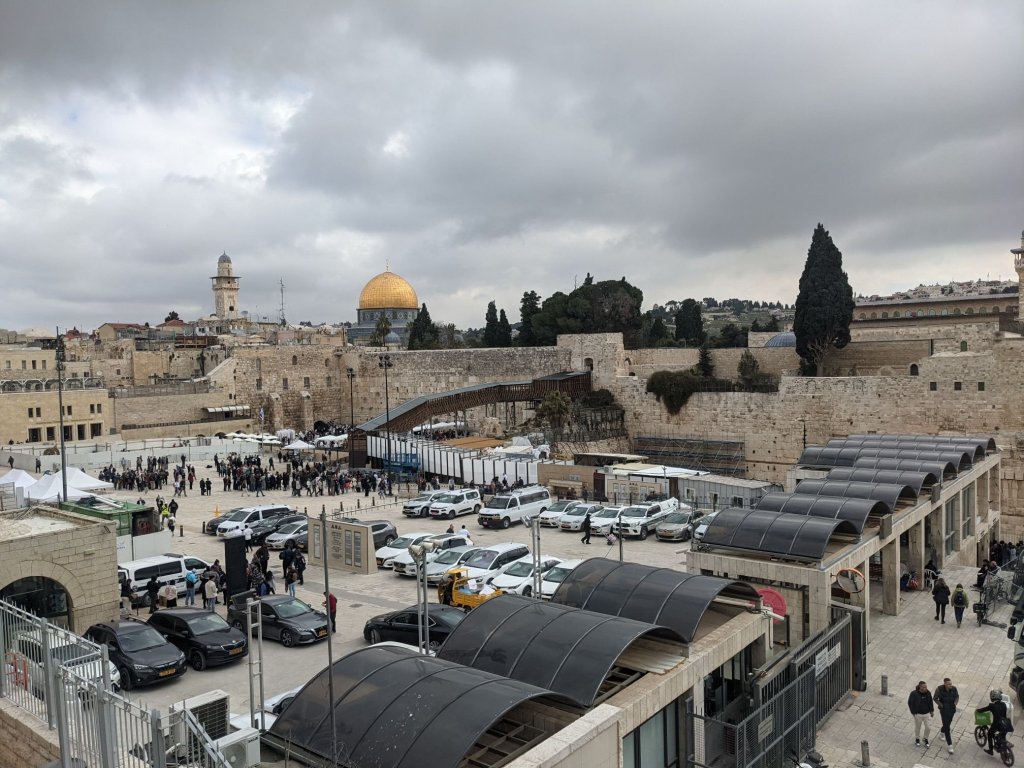
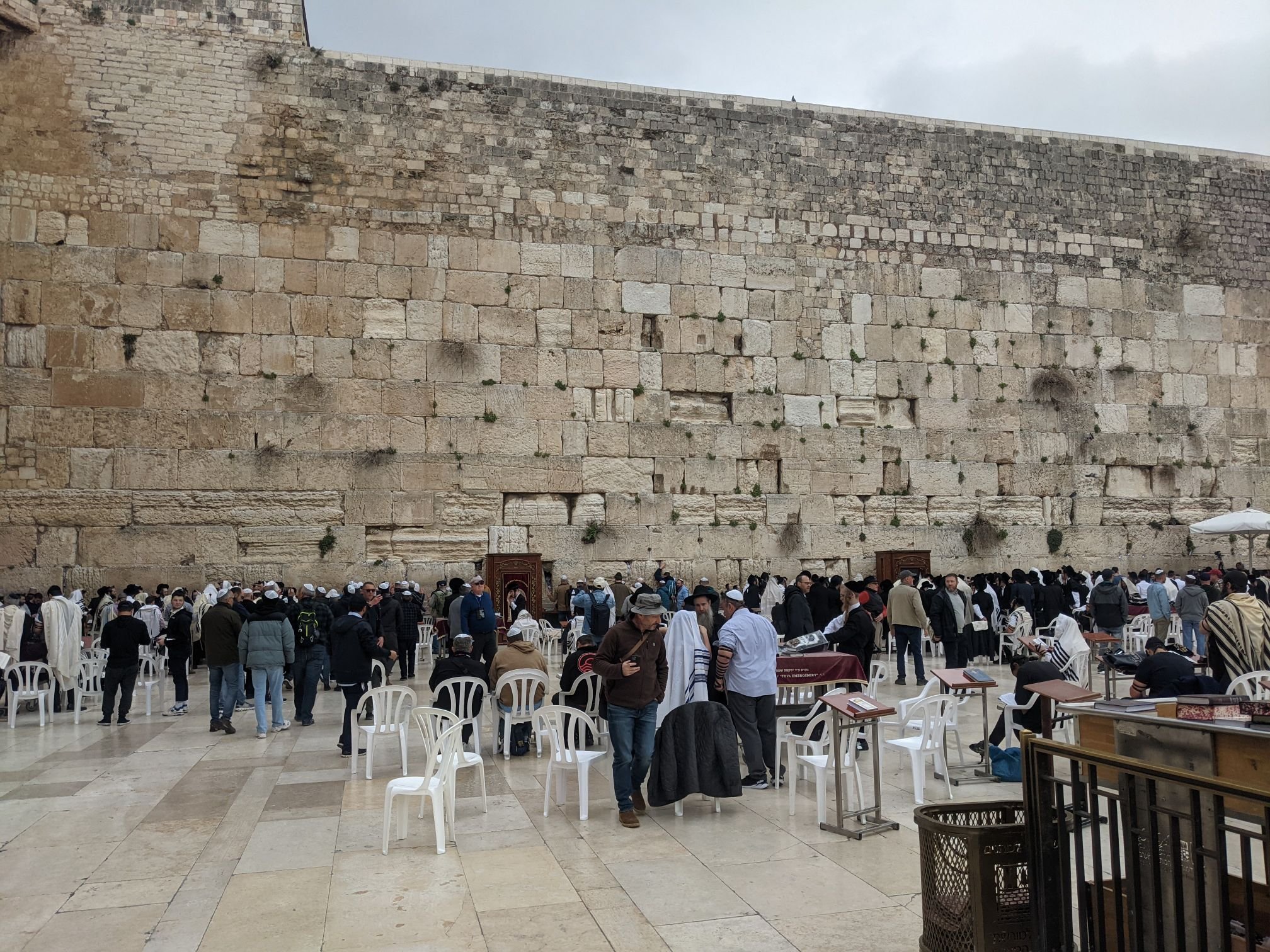
I then headed to the Muslim Quarter – the part with the most security. After a bit of a queue I made my way through some scanners. Interestingly, signs stated that on the Sabbath, they were set to “Shabbat mode.” Apparently on the Sabbath it’s not permitted to operate machines. However, they can be activated on the Thursday and left to run automatically until the Sabbath is over.
A walkway took me up to the Temple Mount, the location of the First Temple in Jewish Tradition. The area is now forbidden to Jews in case they were to accidentally walk on the unknown location of the Holy of Holies. Now, the Temple Mount is the site of two mosques including the Dome of the Rock, whence Mohammed supposedly entered Heaven to talk to God.


I returned to the hostel and spent the remainder of the day resting there.

Feb 19: 73 km
Feb 20: 104 km
Feb 21: 104 km
Feb 22: 80 km
Sounds amazing Sam! So interesting!
LikeLike
Ire
LikeLike
Super to see you back cycling! Love your blogs! You obviously like to cycle beyond difficult borders.
LikeLike
Thanks for taking me to Israel Sam. I haven been yet …,
Look forward to more journeying blogs
LikeLike